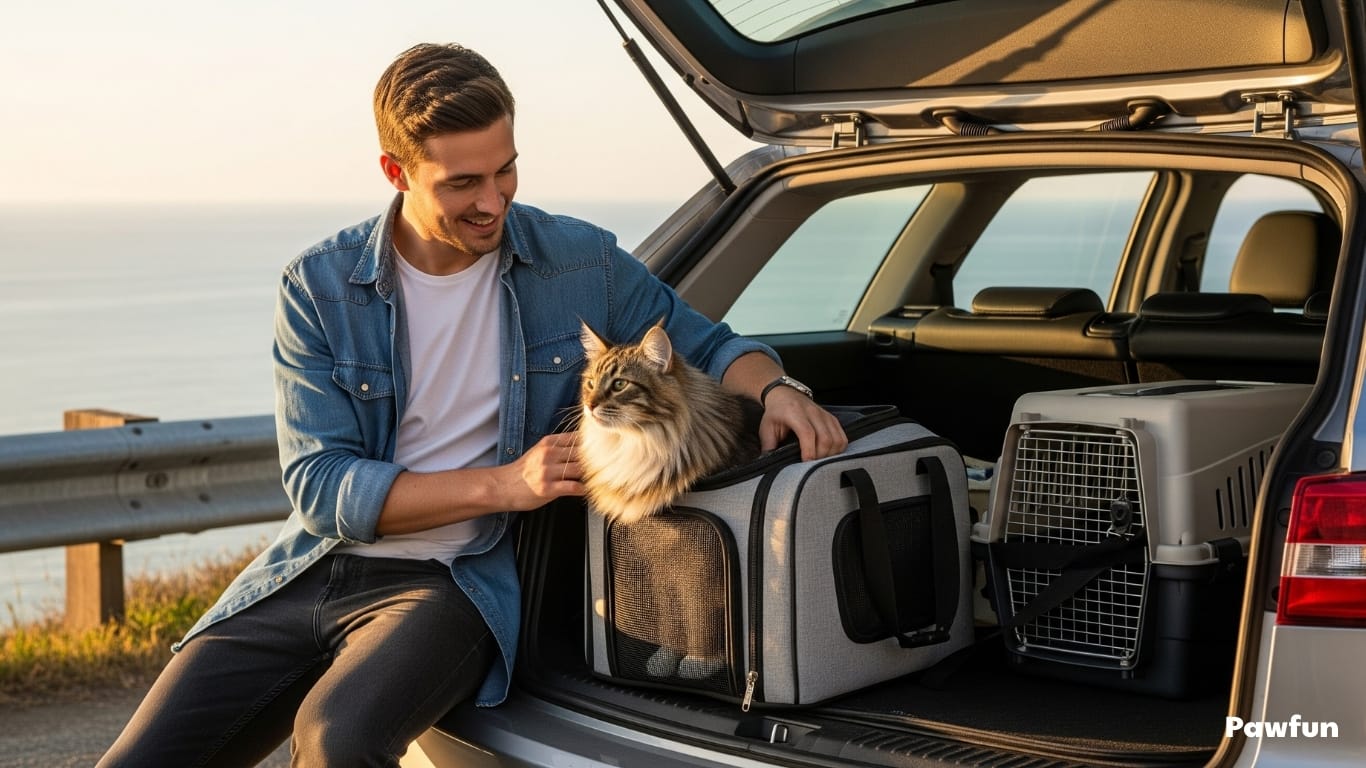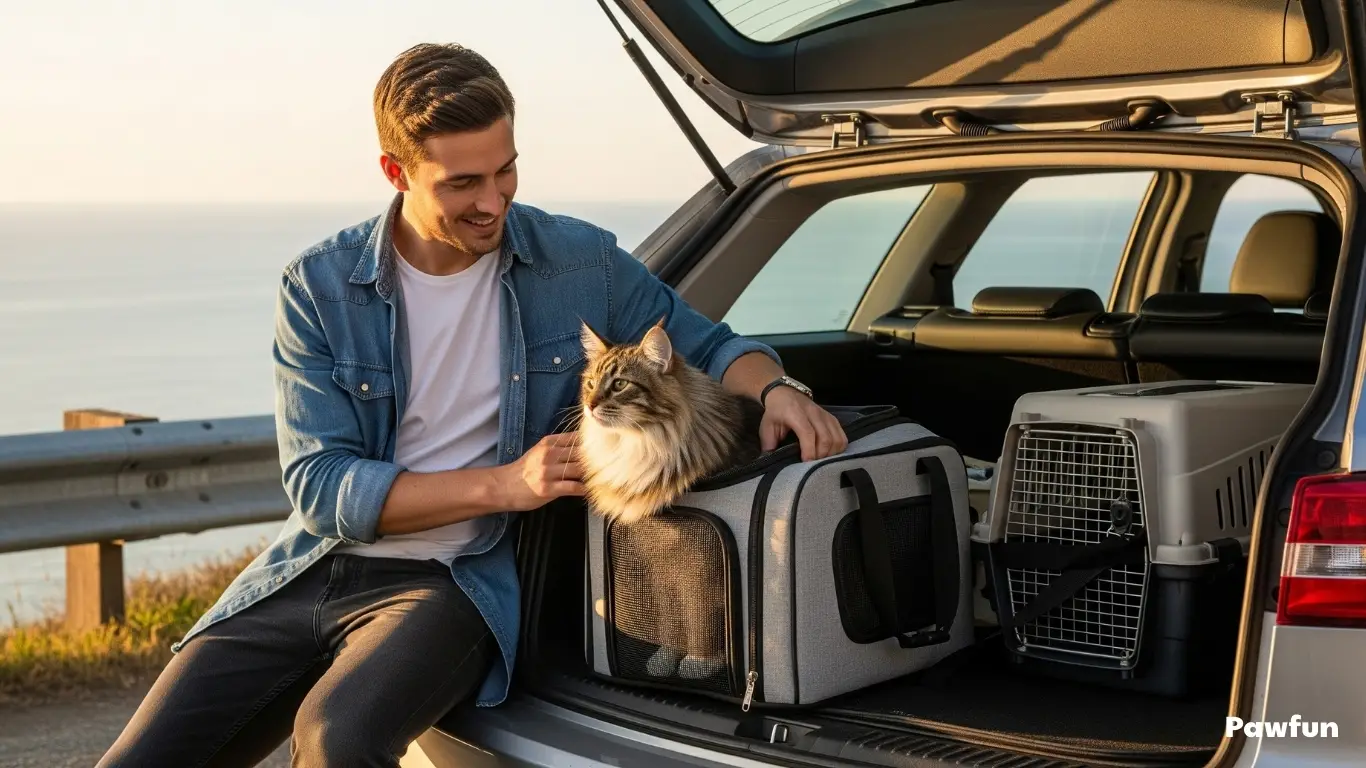
Cat Carrier: The Ultimate Guide to Choosing a Safe & Comfy One
By Jessica Monroe | How-To & Tips
Choosing the right cat carrier is a key safety decision for your pet. However, here’s a shocking fact most owners don’t know. A 2015 study from the Center for Pet Safety tested standard carriers. In fact, 100% of them failed in crash simulations.
That staggering statistic is why this guide exists. So, we’ll cut through the marketing noise to give you clear advice. Specifically, you will learn how to choose between hard-shell and soft-sided carriers. You will also find out the safest place to put a carrier in your car.
Beyond road safety, we will also debunk the “airline-approved” label. Then, we’ll show you what vets recommend for a “fear-free” design. Our goal is simple. Ultimately, we want to help you turn the carrier from a source of stress into a safe space. This will ensure your cat’s well-being on any journey.
Section 1: The Foundation of Your Choice – Decoding Carrier Types and Your Core Needs
Before you even start looking at specific models, it’s essential to lay the groundwork. The perfect cat carrier is a balance of several key factors. I used to think any box would do, but I quickly learned that a thoughtful approach from the start saves a lot of stress—for both me and my cat—down the line.

The Three Pillars of Selection
The “best” carrier is a myth; the best carrier for you is a reality. Your decision should rest on three core pillars:
- The Cat: This is your starting point. Consider your cat’s size, weight, and, most importantly, temperament. A small, calm kitten carrier won’t work for a 15-pound Maine Coon. Is your cat an anxious traveler who hides, or a budding escape artist who tests every seam and zipper? A cat known for scratching or chewing will need a more durable option








